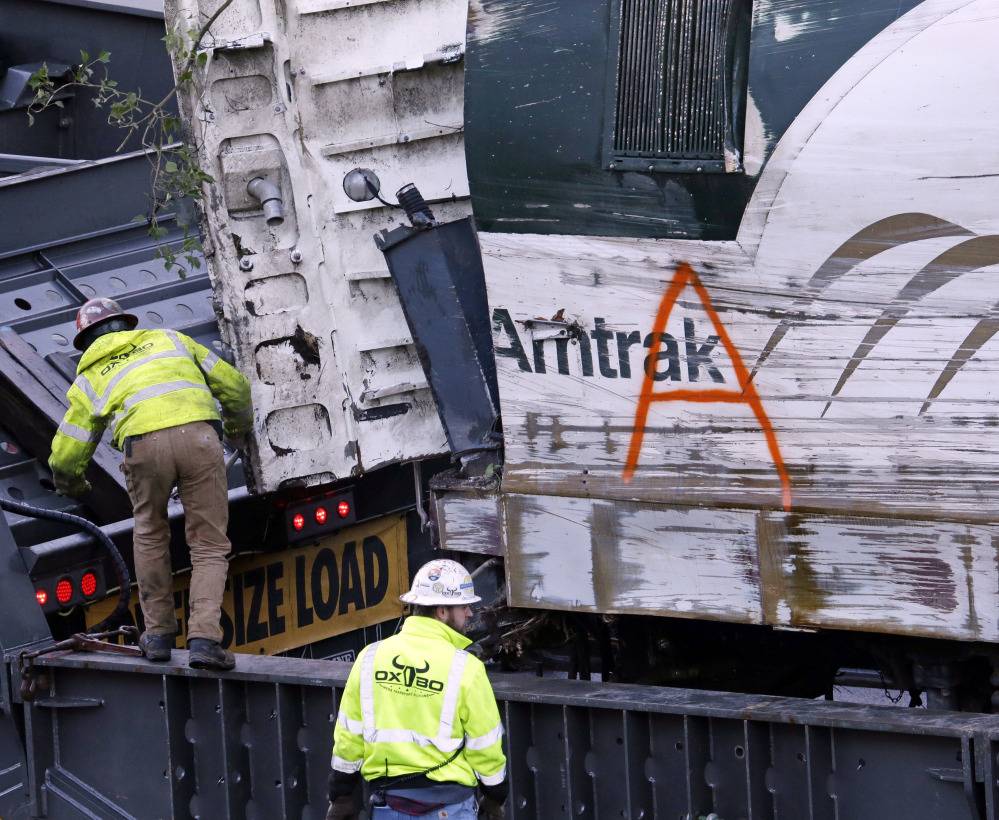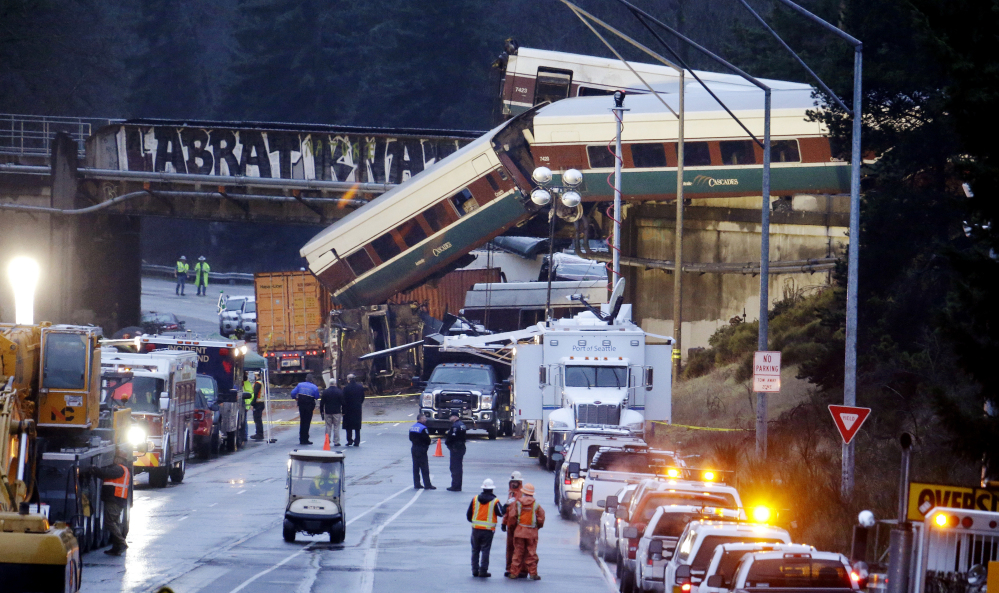Nearly 300 people have died in train crashes that could have been prevented if railroads across the U.S. implemented critical speed-control technology that federal safety investigators have been pushing for close to five decades, according to rail crash data obtained by The Associated Press. But despite overwhelming evidence it could save lives, Congress extended the deadlines for railroads to implement positive train control for years.
All the while, new high-speed train routes continue to spring into operation without the technology, including the new route involved in Monday’s Amtrak crash south of Seattle that killed three people and one in Florida that’s expected to start service in the coming weeks.
Data the NTSB provided to AP on Wednesday shows the crashes the NTSB says could’ve been prevented by positive train control have caused 298 deaths, 6,763 injuries and nearly $385 million in property damage. The records list crashes though May 2015 – when an Amtrak train derailed in Philadelphia, killing eight people – and do not include Monday’s wreck outside of Seattle, which experts say likely could have been prevented by the technology.
The board first recommended using “automatic train control” after two Penn Central commuter trains collided in Darien, Connecticut on Aug, 20, 1969, killing four and injuring 43.
The GPS-based technology is designed to automatically slow or stop trains that are going too fast and can take over control of a train when an engineer is distracted or incapacitated. “We have recommended PTC for decades,” Bella Dinh-Zarr, a member of the NTSB, said Tuesday. “Unfortunately the deadline was moved farther into the future, and every year that we wait to implement PTC to its fullest extent means that more people will be killed and injured.”
A 2008 Metrolink crash in California that killed 25 people pushed PTC to become a hot-button issue on Capitol Hill. Lawmakers mandated railroad companies install the GPS-based PTC technology by 2015, but rail agencies said they didn’t have enough time to install the expensive, complicated system.
Despite rebukes from the federal agency that regulates train travel, congress extended the deadline until the end of 2018 and now, in some circumstances, railroads can apply for an extension until 2020.
Positive train control was installed on 24 percent of the nation’s passenger route miles and 45 percent of freight route miles as of September 30, the date of the Federal Railroad Administration’s most recent quarterly update to its online tracker for the technology.
“Railroads need to stop the foot-dragging and implement Positive Train Control without delay – inaction puts lives at risk,” U.S. Sen. Richard Blumenthal, a Democrat from Connecticut, said Thursday on Twitter.
Copy the Story LinkSend questions/comments to the editors.




Success. Please wait for the page to reload. If the page does not reload within 5 seconds, please refresh the page.
Enter your email and password to access comments.
Hi, to comment on stories you must . This profile is in addition to your subscription and website login.
Already have a commenting profile? .
Invalid username/password.
Please check your email to confirm and complete your registration.
Only subscribers are eligible to post comments. Please subscribe or login first for digital access. Here’s why.
Use the form below to reset your password. When you've submitted your account email, we will send an email with a reset code.